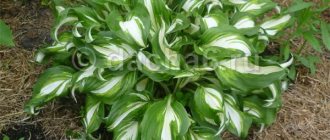How does rosemary overwinter?
For an evergreen subshrub, air temperature and light play an important role in the growing season. It is necessary to grow a perennial taking into account the fact that it feels comfortable when:
- loose soil without excess moisture;
- the soil is slightly alkaline or neutral;
- water regularly, but moderately;
- the area is well lit and protected from the wind.
But the main condition is the ambient temperature. In some regions it decreases greatly during winter, which is dangerous for rosemary. A shrub wintering in open ground may freeze if measures are not taken to protect it.
When the plant is young, it can be brought indoors. But as the bush grows, this becomes more difficult to do. In order for rosemary to successfully overwinter, it is necessary to carry out a number of measures to prepare it for wintering.
What soil and pot are suitable for rosemary?
Selecting a suitable pot and substrate is the most important component of successfully growing Provençal plants at home.
The optimal pot for rosemary should be spacious and have drainage holes. The root system of the plant is strong and branched, so it needs a wide container, approximately 15-20 cm high, about 25 cm wide. As for the material, it is recommended to choose clay or plastic. There should be a tray under the pot so that the water drains into it after watering.
The soil mixture should be light, loose, nutritious, well-drained, moisture- and water-permeable, neutral or slightly alkaline in acidity. Under no circumstances should the soil be acidic, heavy, or clayey! You can plant rosemary in a universal soil mixture for seedlings (3 parts), mixed with sand (1 part) and perlite/vermiculite (1 part). If you don’t want to buy soil, you can dig up garden soil and mix it with sand and perlite (in a ratio of 4:1:1).
Advice! It is recommended to disinfect the soil for indoor plants before use to eliminate pathogenic microflora. Steam it effectively and then pour it with Fitosporin.
Which varieties tolerate wintering easier?
Some of the most common types of rosemary are medicinal and prostrate. It is the latter type that serves as decoration for gardens. They love to plant it as a hedge. Growing, the bush fills the entire space. The result is a low, 0.5 meter fence of fragrant grass dotted with small blue flowers.
Of the prostrate varieties, it is better to choose lavender or creeping. Medicinal or common rosemary has different growth characteristics. It is distinguished by erect shoots with a height of 1 meter and above, and long narrow leaves. The bush is covered with flowers, lilac, violet, white, in early spring. The leaves and tops of shoots are used for medicinal purposes, using them as an infusion.
The essential oil obtained from the perennial is beneficial for elderly and weakened people.
Among the varieties of ordinary rosemary, Rosinka and Tenderness are suitable for temperate climates. It is better to plant them in pre-prepared soil, loose, nutritious, either with seeds or cuttings. In order not to dig up bushes each time for the winter, they are planted in a pot or tub and brought indoors before the air temperature begins to drop.
Description and varieties of crops
Rosemary is an evergreen shrub with a height of 50 cm to 2 m and a powerful root system that goes into the ground to a depth of 4 meters. Narrow leathery leaves 3–4 cm long resemble pine needles.
Graceful branches are framed by needle-like leaves, forming spherical bushes, which in early spring are covered with delicate flowers. Their color ranges from snowy white to purple-violet.
The aroma of the plant is complex, with notes of pine needles, camphor, lemon, and eucalyptus. Shoots are used in cooking, cosmetology, perfumery, and aromatherapy.
In nature, there are several types of plants, but only rosemary officinalis (ordinary) is cultivated, suitable for growing in garden plots.
One of the most famous varieties is “Rosinka”. Low-growing, with branches up to 40 cm long, it does not cause problems when grown in open ground.
A small plant is transplanted into a pot and kept at home - rosemary overwinters well in a cool, bright room. Fragrant greens can be used all year round.
Other common varieties suitable for growing in the country:
- “White” - a decorative fragrant bush is used not only for culinary purposes, but also for decorating the site.
- "Biryusa" - blooms twice a year, in spring and autumn. The flowers are blue or purple and attract bees. Honey plant.
- Blue Winter - tolerates cold temperatures down to -17 degrees. An ornamental plant that produces a persistent spicy aroma, reaching 80 cm, is applicable in landscape design.
- “Crimean” - comes from a wild type of rosemary. It was planted in Crimea about 200 years ago.
- “Horizon” – height 1 meter, bush diameter 90 cm, winter hardiness up to -15 degrees. Practically not affected by diseases and pests.
Another well-known type of crop is prostratus, or prostrate rosemary; its cultivation is often aimed at producing ground cover.
With a bush height of only 50 cm, its creeping shoots grow with a diameter of 1.5 meters. The bright green leathery leaves-needles resemble spruce needles. Famous varieties are “Venzano”, “Lavender”, “Corsica”.
In winter gardens and on loggias, the variety “Tenderness” is often found - grown from seeds through seedlings, after the end of frost, planted in open ground for the summer. With sufficient heat, lighting and watering it reaches a height of 1 meter.
Thanks to the varietal diversity of rosemary, you can choose suitable forms taking into account the climate. In the southern regions, tall species grow well, while in colder climates it is worth giving preference to low-growing, creeping varieties.
Complete the topic with a review of shrubs from a gardener:
Preparing rosemary for winter
The onset of cold weather and freezing of the soil is an obstacle that can destroy an ornamental bush.
In order for rosemary to withstand unfavorable living conditions, it must be prepared for them, starting in spring:
- Close proximity to groundwater is dangerous for the plant. An evergreen perennial will be saved by good drainage, which will prevent the roots of the shrub from weakening and rotting.
- When flowering shoots grow on the site for more than one year, they need to be fed 1-2 times during the growing season. To do this, add up to 2 kilograms of humus or compost per square meter. After fertilizing, the soil is loosened to a depth of 5-10 centimeters.
- Mineral fertilizers also allow rosemary to strengthen before wintering. The complexes should contain potassium, nitrogen and phosphorus. These elements will strengthen the plant’s immunity and allow it to withstand the cold period.
- Pruning the bush during the active period of life will reduce the load on the plant and rejuvenate the crown. The cut branches have a place in the kitchen. They are added to various dishes and drinks.
- When the bush is still young, and the winter is expected to be harsh, it is better to replant the shoots in a pot and bring them indoors. The plant is well preserved at a temperature of 10 degrees Celsius.
See also
How to grow and care for rosemary at home from seedsRead
Strong ornamental bushes with a stable immune system can survive the winter and produce new shoots in the spring.
Pests and diseases
Rosemary is not prone to diseases, and only with excessive moisture does it develop downy mildew. This problem is eliminated by normalizing the watering regime.
Pests may appear:
- scale insect;
- spider mite
They fall on the flower in the summer months, when it is outdoors. To get rid of parasites, you need to wash the plant using laundry soap. Chemicals are only required when there is an abundance of pests.
Growing rosemary on your windowsill is not easy, but it is quite possible.
Rosemary is an evergreen, perennial, spicy and aromatic plant. Translated from Latin it means “sea dew” or “freshness of the sea.” In Ancient Greece, it was believed that the exotic plant has magic and is able to ward off evil spirits. Europeans used rosemary leaves to treat runny noses. The plant can be grown not only outdoors, but also at home. Many gardeners are interested in the question: “Rosemary: how to grow at home?” But there is nothing complicated in growing an exotic plant; the main thing is to know what conditions need to be created for normal development.
Content:
Only one variety is grown indoors - medicinal or fragrant rosemary. The plant is propagated by dividing the bush, seeds, layering and cuttings.
Important! The healing properties of rosemary are used to heal many diseases.
Should rosemary be pruned for the winter?
Pruning rosemary is mandatory, as it helps the bush take on a noble shape. In addition, you need to cut off those branches that are dry or damaged.
It is better to prune shoots during the period of active growth of the perennial. This time falls in March-April. And twigs cut in spring can be used as a seasoning or medicine.
There is no need to prune rosemary before preparing the bush for winter. After all, the plant will need strength to endure a difficult period of life. Pruning will only weaken the plant; it will not be able to recover after removing the shoots. The risk of death of a bush treated with pruning shears before wintering will increase several times.
Planting and care: basic rules
Yes, growing this herb will require time, patience and care. But we have already made sure that our readers can handle any difficulties. Our tips will help you do everything right and avoid common mistakes.
Note! Rosemary has many varieties that grow well in nature under certain conditions. But fragrant rosemary is best suited for growing at home. It is less whimsical than the others and is easy to care for.
Rosemary (medicinal) is valued in cooking, aromatherapy, and medicine.
Now you need to remember a few basic rules for keeping rosemary.
Lighting
Place the container with the plant on the windowsill on the south or east side. Rosemary loves a lot of fresh air and light; when these conditions are met, it produces strong, juicy leaves. Therefore, provide it with plenty of sunlight and regular ventilation. In winter, with short sunny days, it is advisable to provide illumination with special lamps.
Good lighting with plenty of sunlight is important for rosemary.
Temperature
It is advisable to provide uniform heat with minor changes: this plant does not tolerate sudden temperature changes with large amplitudes. Keep this in mind if you decide to move rosemary to the loggia in winter to provide it with good lighting. Overwintering of rosemary can take place at temperatures from 5 to 15 degrees.
For the winter, provide rosemary with a temperature of 5-15 degrees
Choosing a pot and soil
The container for the plant should be spacious, since it has an extensive and powerful root system that grows quickly. The best material for a pot is clay, ceramic or terracotta. Be sure to lay drainage made of expanded clay or small pebbles at the bottom of the flowerpot.
As for the soil, it is good to use a slightly alkaline or neutral substrate. It can be purchased in specialized stores and supermarkets. You can also prepare such soil yourself. To do this you need to mix:
- 1 part sand;
- 1 part peat;
- 1 part humus;
- 2 parts of turf land;
- 2 parts leaf soil.
The soil should be loose, with good moisture permeability.
The easiest way is to buy a suitable substrate in the store.
Watering
For rosemary, excessive watering is much more harmful than lack of moisture. Drying out the substrate will lead to yellowing of the leaves, which can be easily corrected with a glass of water. But excess moisture in the soil and its stagnation will have a detrimental effect on the condition of the root system, which will simply begin to rot.
Do not allow excess moisture in the rosemary pot: this may cause the root system to die.
In the hot season, with plenty of sunlight, water rosemary generously, but control soil moisture. There should be no stagnation of water! Winter watering should be regular and moderate. In spring, the level of water consumption can be gradually increased as the air temperature rises.
Top dressing
Active growing season for rosemary occurs from March to September. At this time, the plant needs feeding. Carry it out twice a month, use organic and mineral fertilizers. To avoid mistakes, buy complete complex fertilizers. Don't forget about calcium - rosemary needs it for good growth and development.
A few additional tips
The most valuable thing for us about rosemary is its aroma and taste. To obtain the seasoning, young shoots (they are covered with hairs) with leaves and flowers are cut from the plant, dried and processed. This should be done when the bush is actively blooming.
In spring, the plant needs to be pruned to form a thick and beautiful crown. In this case, you need to leave only a few internodes formed from the growth from last year.
Proper pruning of rosemary will ensure the growth of a beautiful crown.
If mature rosemary is leafing out its stems, perform a rejuvenation pruning to remove shoots growing above the soil surface. This should be done in the last ten days of February or early March. As a rule, such pruning is carried out every 7 years.
Dig or cover: which method is better?
The delicate ornamental crop cannot tolerate even a slight drop in temperature. Therefore, in the fall, the gardener must determine what to do, how to reliably protect rosemary from the coming cold. And they do this not when the temperature has already dropped below 0 degrees.
In regions with warm, wet winters, rosemary bushes can be covered. Dry leaves, straw, and sawdust are suitable for this. Before sheltering, the bush is bent to the ground. If there are few shoots, they are pinned with wooden pins. You can limit the growth area with boards or shields. Dry natural material is poured into them and covered with film on top. Such a shelter will save the plant from the influence of low temperatures.
If the rosemary bush is young and has not grown much, it can be transplanted into a pot, placing it in a cool, bright room. The perennial will survive the dormant period well, and in the spring it will be ready to bloom in the garden.
But not all bushes can be dug up. If the bush has grown sufficiently, then it is better to cover it with improvised means. But in areas with cold climates, this method will not save rosemary from freezing. Therefore, growing in a container is the best option. Then in the spring they move the pot with the evergreen crop into the fresh air in the garden, and in the fall they bring it into the basement.
Benefits of growing rosemary at home
Rosemary is an amazing Mediterranean plant, and not as capricious as people think. In fact, the perennial is very unpretentious, tenacious, and does not need scrupulous care; it is enough to provide it with minimal care, and, what is very important, provide comfortable conditions.
advantages of growing rosemary on a windowsill can be highlighted
- Possibility to preserve a perennial bush in winter. The fact is that rosemary is a southern, heat-loving plant that can easily die in regions with cold winters.
- Decorating the windowsill in the house with an unusual and elegant plant.
- Use for culinary purposes. Whether dry or fresh, the spice transforms many dishes.
- Saving money. In stores, rosemary has the highest price compared to other greens. Therefore, growing it at home will allow you to have fragrant greens without significant cash herbs.
- Rosemary leaves contain essential oils, giving the plant a pleasant, spicy scent. Therefore, you will have the opportunity to immerse yourself in the world of Provence without leaving your apartment.
Where can you transplant rosemary for the winter?
The semi-shrub ornamental crop grows well in open ground, increasing in size every year. Rosemary shoots can reach a height of about a meter or more. At the same time, the number of leaves increases, and the shoots begin to become lignified. In this case, it is difficult to transplant the plant to another place.
See also
Planting and caring for rosemary in open groundRead
But when it is known that frosts will be within minus 10 degrees, the bush will die in any case, and no shelter will save it. It is urgent to prepare a warm room with optimal lighting. The container with the bush is transferred there and left for the winter.
Shoots dug out of the ground can be planted in a prepared container with nutritious and loose soil. It is necessary not to forget about the acidity of the soil. It is better to lime the soil so that rosemary survives the winter successfully.
After transplanting, you need to let the plant get stronger by watering it regularly. You should not keep a garden plant in the room. The ideal option for it would be a balcony, loggia or veranda. There will be plenty of light, and the air temperature will not drop below 5 degrees Celsius. Here the fragrant shoots will survive the winter and gain strength for the subsequent growing season.
Description of the plant
The Yasnotkov family includes a large number of varieties of herbs, among them rosemary. This perennial evergreen shrub is native to the Mediterranean. Even today, in countries such as Greece, Spain, Portugal, and Cyprus, shrubs growing naturally can be found in the mountains and dry valleys. In our country, the distribution area of wild rosemary covers the Crimea and the North Caucasus.
The first mentions of the plant were found in manuscripts of Ancient Greece, Egypt, and Rome. People considered the flower magical and used it in rituals of expelling evil spirits and healing seriously ill people. The Egyptians believed that it would help the soul of the deceased to overcome the path to the other world and placed bouquets of rosemary in the hands of deceased relatives.
The plant has a very branched, powerful lignified root up to 3-4 m long, from which tetrahedral, slightly pubescent shoots extend, sometimes reaching a height of 2 m, although there are also low-growing, almost shrubby varieties. They do not stretch upward, but are pressed against the very surface of the soil. Their height is only 15 cm.
Rosmarinus is grown for its leaves, the aroma of which combines notes of pine needles, lemon, camphor, and eucalyptus. The original leaves have short petioles and look like needles with slightly curved, blunt tips.
In April-May, the first flowers appear on the bushes, and the flowering period ends in late autumn, in October-November. The structure of rosemary flowers is typical of the Lamiaceae family. Their petals are false racemes, consisting of 5-10 “flowers”, open like a pharynx. There is a legend about how rosemary flowers got their beautiful, pale blue color. According to her, the Virgin Mary rested during the journey, placing the baby Jesus under a rosemary bush, over which she threw her cloak to protect the child from the scorching sun. The white flowers instantly changed their color, becoming sky blue.
The fruits formed after flowering are small round nuts. Their full ripening occurs in the fall. The surface (shell) of the fruit is smooth, and the color is brownish-brown.
Scientists put forward two versions of why the plant has such an original name. According to one theory, it is derived from the combination of two Latin words, ros and marinus, which literally mean sea dew. Other philologists believe that the word has Greek roots: rhops and myrinos, which translates as low-growing balsam bush. But people, relying on its external data and beneficial properties, gave it other names:
- wedding flower;
- bridesmaid dress;
- incense herb;
- dike;
- sea freshness;
- pharmaceutical rosemary.
The genus Rosmarinus is not distinguished by its diversity of species. Scientists botanists identify only 5 subspecies, of which only one is grown in our country - medicinal rosemary, which has dark green leaves-needles and flowers from light blue to dark purple. In Russia it is represented by 3 varieties (Vishnyakovsky Semko, Nezhnost, Rosinka). There are many more varieties of rosemary in the collections of foreign gardeners. But only experienced specialists can experiment with their cultivation, since almost all of them belong to the heat-loving category and in order to grow them in the cold regions of our country you will have to make every effort. While domestic varieties are frost-resistant and unpretentious.
Caring for rosemary in winter
It's easy to care for medicinal perennials at home. Care activities include:
- watering to prevent the soil in the pot from drying out;
- one-time fertilizing with organic or mineral fertilizers;
- control of air temperature not higher than 8-10 degrees Celsius and humidity at 75 percent;
- fresh air flow with protection from drafts.
Those rosemary bushes that remain in the garden or country house must also be looked after in order to preserve the valuable crop.
In the garden
To protect rosemary grown in the garden, it must be carefully prepared for wintering. In addition to reliable shelter, the shrub needs loose soil so that there is enough moisture and air for the long winter. The soil must have enough nutrients to help the plant survive difficult times.
If there is good shelter, it is necessary to check the condition of the bushes and ventilate the plantings on warm days of winter. An influx of fresh cool air will give the plant strength and save it from rotting and fungal infections.
In the open ground
Anyone who leaves a rosemary bush in the ground for the winter must provide it with warmth. In addition to covering with straw, spruce branches, and dry leaves, you need to hide the plantings under the snow. Therefore, before planting a heat-loving crop, you need to choose a site for the plant where more snow accumulates and is not blown away by the winds. The snowdrift retains heat throughout the winter, which helps prevent rosemary from dying.
In the country
Before growing heat-loving rosemary on a plot, summer residents need to know the rules for caring for it and the conditions for keeping it during the cold season. It is advisable to plant the plant in a pot to place it in the basement or on the veranda in October, providing enough light. Given the short duration of daylight in winter, it is necessary to install fluorescent lamps in the room. By hanging them at a level of 30-40 centimeters from the rosemary, they provide the plant with the opportunity to prepare for the growing season and flowering.
It is necessary to water the bush rarely, coming to the dacha 2-3 times a month. Rosemary almost does not need fertilizing. If care was correct during the active season, then the plant will have enough nutrition for the entire winter.
You can leave the perennial in the ground for the winter if the dacha is located in an area with a temperate climate . Then a shelter made of natural materials will allow the ornamental shrub to calmly survive the cold and frost.
Pests and diseases
To ensure good plant growth, it is necessary to carry out disease prevention. Let's look at what diseases and pests can appear when growing rosemary.
Spider mite
A small insect that lives on the underside of leaves and stems. You can find out about its presence by a thin cobweb. They are fighting with chemicals: “Tanrek”, “Aktellik”. The plant can then be grown as an ornamental. It is not recommended to eat the leaves.
Aphid
You can fight insects using folk remedies. Dissolve grated laundry soap in water and spray the plant with the prepared solution.
Mildew
The disease appears as small white spots on the leaves. Then their number increases and it seems that the plant has been sprinkled with flour. The appearance of dew is promoted by high air humidity with poor ventilation. You can try to tear off the foliage, but if this does not work, you should spray the plant with fungicides. But the leaves will no longer be used as a seasoning.
Interestingly, the beneficial properties of rosemary are used not only for treatment, but also for the prevention of diseases.
Rosemary growing in the house releases volatile substances - phytoncides, which disinfect the air in the room, destroy pathogens, and eliminate unpleasant odors. Growing a spicy plant with a pleasant aroma in your home is not difficult; you just need a little free time and a great desire to obtain an exquisite spice.
Rosemary is known to many housewives, but not everyone has tried to use it in cooking. And this is a big omission. The name of this spicy herb is translated from Latin as “sea freshness”. It gives freshness and special aroma to dishes. You don’t have to spend a lot of money to buy rosemary, because it can be grown at home. If you learn how to properly plant in a pot and care for a plant, then at home on the windowsill you will have not only a useful seasoning, but also a beautiful ornamental plant.
Rules for planting rosemary
Rosemary can be easily propagated in two ways: seeds and cuttings. Seeds are traditionally a more complex method. This is also due to the fact that rosemary seeds germinate very poorly. But this is nevertheless possible if you strictly follow the instructions.
- Take a piece of gauze and moisten it generously. Place rosemary seeds on damp gauze and leave for 2 days.
- After this, the seeds are laid out on moist soil, the container with it is covered with cling film to retain heat and moisture. In order for oxygen to flow inside, you need to make several small punctures in the film using a toothpick.
- As soon as the shoots begin to appear, they should be periodically sprayed with water from a spray bottle.
- In 2-4 weeks, the seedlings should reach 7-9 cm in height and at least 3 leaves should form on it. Then the seedlings can be transplanted into permanent soil. It is very important not to damage the rosemary sprouts.
Attention! It is recommended to germinate the seeds of this crop in early spring or autumn.
The second way to propagate rosemary is using cuttings from an adult plant. To do this, you need to cut off the woody shoot from the top of the bush. The lower leaves of the cutting are removed, and the cutting itself is placed in a moistened mixture of peat and sand (1:1). If it is difficult to obtain such a mixture, you can replace it with a vessel of water. As soon as the cuttings produce a root, they are transplanted into permanent soil.
Aromatic seasoning can be grown on the windowsill
Care and cultivation in a pot on the windowsill
The main thing in growing rosemary, like any other plant, is the soil. In this case, you will need the most fertile soil, rich in humus. Experienced gardeners recommend the following mixture: leaf soil, turf soil, humus, peat, sand (2:2:1:1:1).
Attention! Acidic soils are a killer for rosemary.
But not only the soil is important, but also other aspects of plant care:
- Pot. Rosemary needs a lot of space, so the pot should be spacious. It is best to take a clay pot. Be sure to provide drainage using expanded clay or pebbles.
- Temperature and humidity. Rosemary does not need high temperatures, but loves the sun very much, so it is placed on south-facing windows. In winter, the plant should be allowed to “hibernate” and kept at a temperature of 10-13°C. Otherwise, rosemary will not produce flowers. As for humidity, it is not very important. But it is better to provide the plant with high humidity.
- Watering. The flower can be harmed by both drought and excessive moisture. Therefore, you need to water rosemary regularly, but in moderation. What is more important is what kind of water to water. It shouldn't be tough. In winter, water for irrigation needs to be slightly heated.
Transplanting rosemary
- Transfer. Rosemary is replanted every 2 years in early spring. If the root system is too dense, you can do this every year.
- Feeding This plant is fed during the active growing season - from March to September. This is done twice a month with the help of fertilizers (both organic and mineral).
Advice. In order to fully saturate rosemary with the sun, in the summer pots with it can be taken to the dacha. During the day, this plant is exposed to the open sun, and hidden in the house at night.
Pest Control
Rosemary is quite resistant to diseases and pests. However, troubles can also happen to him. Such as spider mites. The main sign of its presence is an almost imperceptible thin web on the leaves and stem of the plant. If the mite has just appeared, you can deal with it with soapy water and thoroughly wash the rosemary leaves. If the infection is advanced, insecticides cannot be avoided.
If the watering regime is violated, the lower leaves of rosemary may turn yellow. This is a signal that the plant lacks moisture. If rosemary sheds its leaves, this indicates excessive watering. If small rust spots appear on the leaves of the plant, spraying preparations with copper will help eliminate them.
Application and benefits
Rosemary is grown not only for beauty. It is used in cooking and folk medicine.
- Medicine. The leaves of this plant contain essential oils, resins and camphor. Therefore, rosemary is used to relieve spastic pain, as well as to eliminate inflammation. It is also used as an expectorant and diuretic. Rosemary helps with diseases of the gastrointestinal tract, liver and gall bladder, diabetes, neurasthenia, and insomnia.
Rosemary is used in both medicine and cooking
- Cooking. This spice has a specific pine smell with sweet notes and a spicy-pungent taste. It is used to season vegetable dishes made from eggplant, cabbage, mushrooms and beans. This spice gives a refined taste to soups, meat and even fruits. And drinks with it give a person vigor. Rosemary is added to desserts, syrups and liqueurs for a specific fresh aroma.
Rosemary decorates the home, purifies the air due to its phytocidal properties and provides a seasoning for the kitchen. Therefore, such a plant should be on the windows of every home.
Planting rosemary: video
How to care for rosemary: photo
Until recently, rosemary was considered an exotic plant and an unusual seasoning for our cuisine, but recently it has become increasingly popular.
Not everyone knows that rosemary can be grown in an apartment, and not just in gardens, vegetable gardens and other open areas, and sometimes it takes root better in the house, since it loves warmth. In this article we will tell you in detail how to grow such unusual, fragrant and very healthy greens right on your windowsill.











